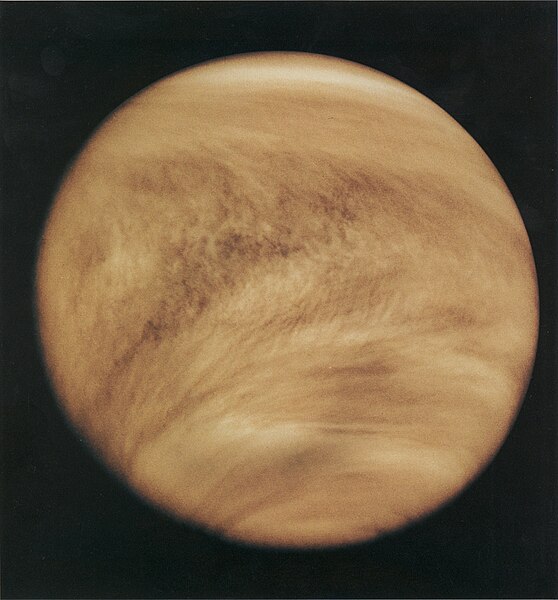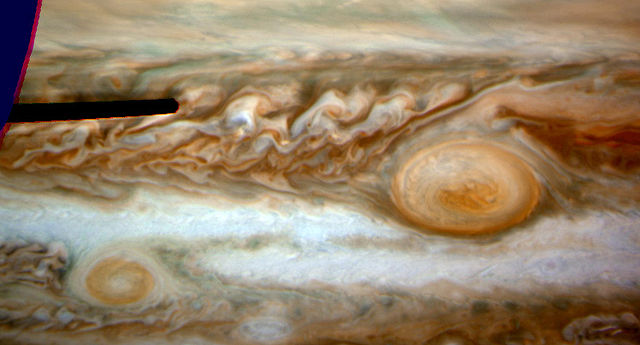Extraterrestrial atmosphere
The study of extraterrestrial atmospheres is an active field of research, both as an aspect of astronomy and to gain insight into Earth's atmosphere. In addition to Earth, many of the other astronomical objects in the Solar System have atmospheres. These include all the giant planets, as well as Mars, Venus and Titan. Several moons and other bodies also have atmospheres, as do comets and the Sun. There is evidence that extrasolar planets can have an atmosphere. Comparisons of these atmospheres to one another and to Earth's atmosphere broaden our basic understanding of atmospheric processes such as the greenhouse effect, aerosol and cloud physics, and atmospheric chemistry and dynamics.
Major features of the Solar System (not to scale)
Atmosphere of Venus in UV, by Pioneer Venus Orbiter in 1979
The tenuous atmosphere of Mars visible on the horizon.
Oval BA on the left and the Great Red Spot on the right
An atmosphere is a layer of gasses that envelop an astronomical object, held in place by the gravity of the object. A planet retains an atmosphere when the gravity is great and the temperature of the atmosphere is low. A stellar atmosphere is the outer region of a star, which includes the layers above the opaque photosphere; stars of low temperature might have outer atmospheres containing compound molecules.
The atmospheric gases around Earth scatter blue light (shorter wavelengths) more than light toward the red end (longer wavelengths) of the visible spectrum; thus, a blue glow over the horizon is seen when observing Earth from outer space.





